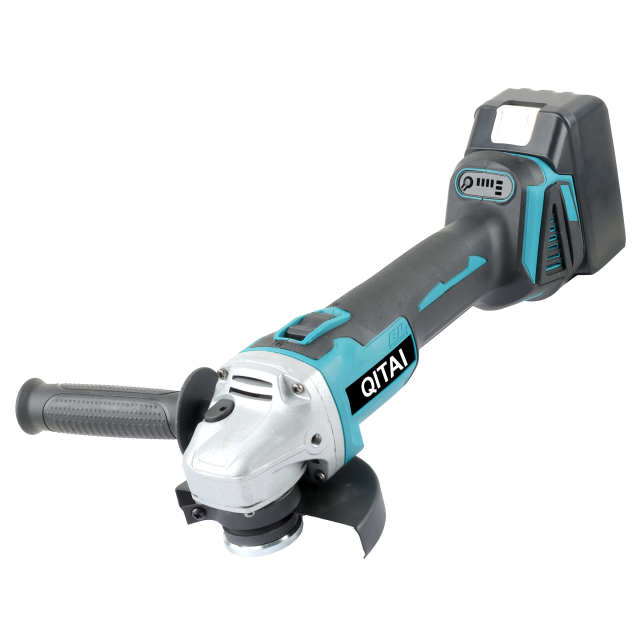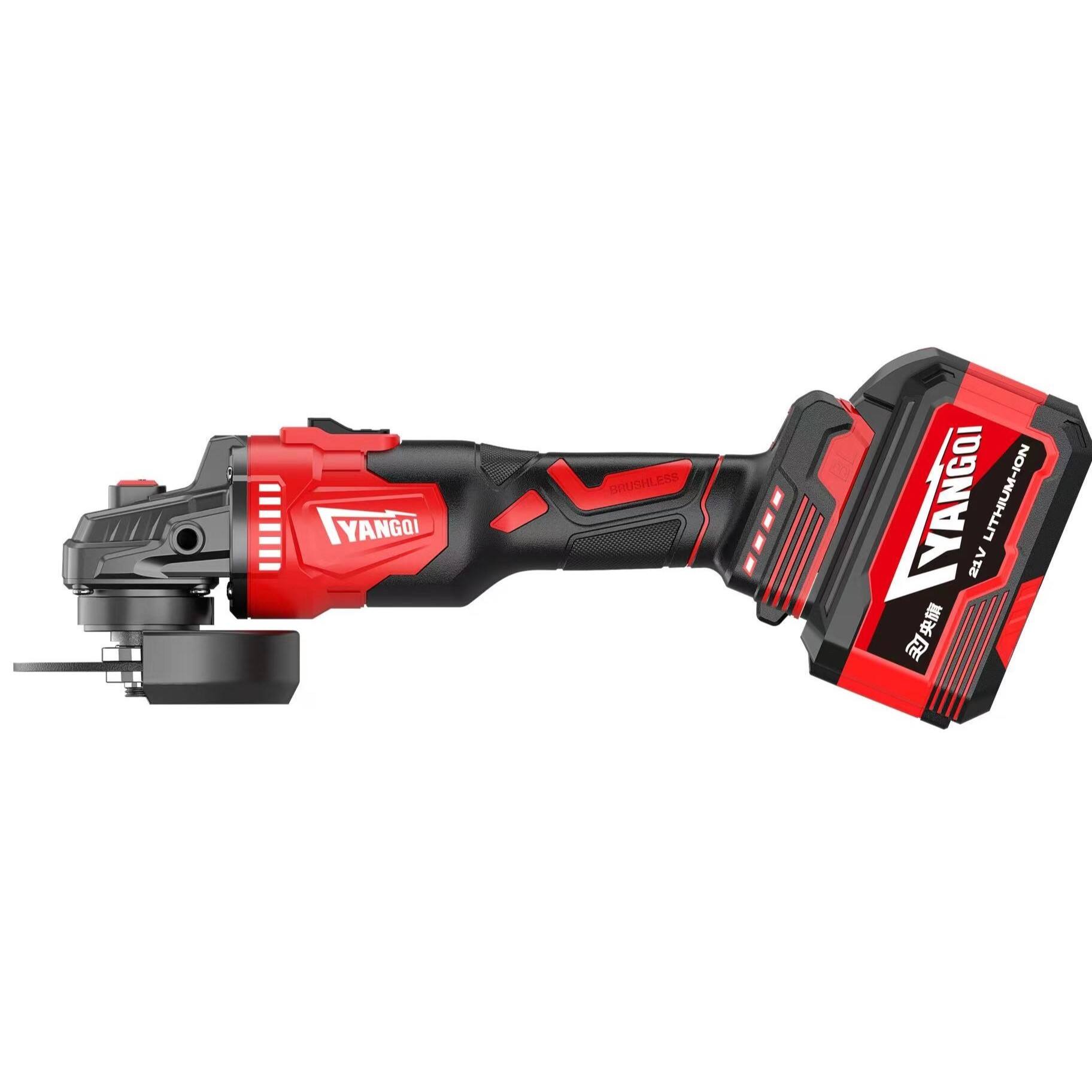Linee Guida Essenziali per la Sicurezza nell'Uso della Smerigliatrice Angolare
Smerigliatrici angolari sono strumenti potenti e versatili presenti in officine, cantieri edifici e garage domestici in tutto il mondo. Sebbene questi utensili siano eccellenti per tagliare, levigare e lucidare diversi materiali, figurano anche tra gli attrezzi elettrici più pericolosi se utilizzati in modo improprio. Comprendere la sicurezza nell'uso della smerigliatrice angolare è fondamentale per prevenire incidenti e garantire un funzionamento efficiente. Questa guida completa illustra le misure di sicurezza essenziali che ogni operatore dovrebbe conoscere.
Requisiti di Equipaggiamento di Protezione Individuale
Protezione per gli Occhi e il Viso
La prima linea di difesa per la sicurezza nell'uso della smerigliatrice angolare inizia con una corretta protezione di occhi e viso. Uno schermo integrale per il viso è essenziale, poiché detriti volanti, scintille e frammenti metallici possono causare gravi lesioni. Gli occhiali di sicurezza devono essere indossati sotto lo schermo facciale per una protezione aggiuntiva. L'equipaggiamento protettivo per gli occhi deve rispettare gli standard ANSI Z87.1 e garantire protezione laterale contro le particelle che potrebbero provenire da diversi angoli durante l'uso.
Quando si sceglie la protezione del viso, assicurarsi che sia abbastanza comoda da indossare per periodi prolungati mantenendo una buona visibilità. Rivestimenti anticondensa e adeguate caratteristiche di ventilazione aiutano a prevenire l'appannamento e l'oscuramento della vista durante l'uso. Ricordare di sostituire l'equipaggiamento di protezione che mostra segni di usura, graffi o danni, poiché questi elementi possono comprometterne l'efficacia protettiva.
Protezione delle mani e del corpo
La protezione adeguata delle mani è fondamentale quando si utilizza una smerigliatrice angolare. Guanti da lavoro pesanti realizzati in materiali resistenti al taglio aiutano a proteggere da bordi taglienti, superfici calde e detriti in volo. I guanti devono essere ben aderenti per mantenere la destrezza necessaria durante l'uso dei comandi dello strumento.
La protezione del corpo include l'indossare abbigliamento appropriato, come camicie a maniche lunghe e pantaloni lunghi realizzati in materiali resistenti. Evitare indumenti larghi che potrebbero impigliarsi nelle parti in rotazione. Si raccomandano materiali ignifughi quando si lavora in applicazioni che generano scintille significative.

Ispettione e manutenzione adeguata dello strumento
Controlli Pre-Operativi
Prima di ogni utilizzo, effettuare un'ispezione accurata della smerigliatrice angolare. Controllare il cavo di alimentazione per verificare eventuali segni di danni o usura. Esaminare la mola per rilevare crepe, scheggiature o altri danni. Verificare la sicurezza e la posizione della protezione: deve coprire la maggior parte della mola ed essere posizionata tra l'operatore e l'area di lavoro.
Verificare che la mola sia classificata per la velocità massima della smerigliatrice ed adatta al materiale da lavorare. Assicurarsi che tutti i componenti di montaggio siano saldamente fissati e che la mola sia correttamente allineata. Sostituire qualsiasi componente danneggiato prima dell'uso.
Requisiti di manutenzione regolare
La manutenzione della smerigliatrice angolare è essenziale per un funzionamento sicuro. Pulire l'utensile dopo ogni utilizzo, prestando particolare attenzione alle fessure di ventilazione per evitare surriscaldamento. Controllare e serrare regolarmente eventuali elementi di fissaggio allentati. Conservare le mole in modo appropriato per evitarne i danni causati dall'umidità o dagli urti.
Sostituire le spazzole di carbone usurate secondo necessità e assicurarsi che l'interruttore di alimentazione funzioni correttamente. La lubrificazione regolare delle parti mobili aiuta a mantenere prestazioni ottimali e previene l'usura eccessiva. Documentare le attività di manutenzione e conservare i registri relativi alla sostituzione delle mole e alle riparazioni.
Tecniche operative corrette
Posizionamento e impugnatura corretti
Mantenere una corretta posizione del corpo è fondamentale per la sicurezza nell'uso della smerigliatrice angolare. Stai in piedi con una postura bilanciata, tenendo entrambi i piedi ben piantati a terra. Impugna la smerigliatrice con entrambe le mani utilizzando gli appositi manici, assicurandoti di avere una presa salda ma non eccessivamente stretta. Posizionati in modo che scintille e detriti siano deviati lontano dal tuo corpo e da chiunque altro nell'area di lavoro.
L'utensile deve essere tenuto all'angolo corretto rispetto al compito da eseguire, tipicamente tra i 15 e i 30 gradi per le operazioni di levigatura. Evita di applicare una pressione eccessiva, poiché ciò potrebbe causare la rottura della mola o la perdita di controllo. Lascia che sia il peso e la velocità dell'utensile a svolgere il lavoro, senza forzarlo.
Movimentazione dei materiali e configurazione dell'area di lavoro
Fissa adeguatamente il pezzo in lavorazione utilizzando morsetti o una morsa. Non tenere mai il materiale con una mano mentre utilizzi la smerigliatrice con l'altra. Assicurati che l'area di lavoro sia pulita, ben illuminata e priva di ostacoli che possano causare inciampi. Tieni i materiali infiammabili lontano dall'area di lavoro, poiché le scintille possono propagarsi a distanze sorprendentemente elevate.
Delimita una zona sicura intorno all'area di lavoro per impedire ad altre persone di entrare nella traiettoria di eventuali detriti in volo. Utilizza schermi o barriere quando necessario per contenere le scintille e proteggere persone o attrezzature vicine. Tieni un estintore a portata di mano quando lavori con materiali che generano scintille significative.
Intervento d'emergenza e protocolli di sicurezza
Azioni immediate in caso di malfunzionamento dell'utensile
Sapere come reagire rapidamente se la smerigliatrice angolare dovesse malfunzionare. In caso di bloccaggio o contraccolpo, mantenere una presa salda e spegnere immediatamente l'utensile. Se si verificano vibrazioni anomale, interrompere l'operazione e ispezionare la ruota e i componenti di montaggio. Per problemi elettrici, scollegare immediatamente l'alimentazione e far ispezionare l'utensile da un tecnico qualificato.
Tieni a portata di mano i numeri di emergenza e conosci la posizione delle forniture di primo soccorso e delle attrezzature di emergenza. Una formazione di base nel primo soccorso può essere fondamentale per intervenire rapidamente ed efficacemente in caso di incidenti.
Strategie di prevenzione degli infortuni
Sviluppare e seguire procedure operative standardizzate per l'uso della smerigliatrice angolare. Ciò include la corretta selezione degli utensili, le procedure di ispezione e le pratiche di lavoro sicure. La formazione regolare e gli aggiornamenti sulle procedure di sicurezza aiutano a mantenere alta la consapevolezza e prevenire la negligenza. Documentare eventuali quasi incidenti o incidenti al fine di identificare modelli e migliorare le misure di sicurezza.
Creare una cultura della sicurezza incoraggiando la segnalazione di condizioni non sicure e condividendo le esperienze apprese. Implementare un sistema di controllo incrociato (buddy system) per le operazioni ad alto rischio e garantire un'adeguata supervisione degli operatori inesperti.
Domande frequenti
Con quale frequenza devo ispezionare la mia smerigliatrice angolare?
Eseguire un'ispezione visiva prima di ogni utilizzo e effettuare un'ispezione approfondita settimanalmente se l'utensile viene usato regolarmente. Verificare l'usura del cavo di alimentazione, la corretta posizione delle protezioni, lo stato della mola e il regolare funzionamento di tutti i comandi.
Qual è il modo corretto di conservare le mole per smerigliatura?
Conservare le mole in un luogo asciutto e a temperatura moderata. Tenerle appoggiate piatte su una superficie stabile oppure appese verticalmente, separate da altri utensili per evitare danni. Evitare l'esposizione a temperature estreme, umidità o urti che potrebbero comprometterne l'integrità.
Quando devo sostituire la mola?
Sostituire la mola quando presenta segni di usura, crepe, scheggiature o usura irregolare. Sostituirla anche se è caduta o è stata danneggiata, anche in assenza di danni visibili. Non utilizzare mai una mola oltre la data di scadenza o che sia stata esposta a umidità o sostanze chimiche.
Cosa devo fare se si verifica un contraccolpo?
Se si verifica un contraccolpo, mantenere salda la presa sull'utensile e rilasciare immediatamente l'interruttore di alimentazione. Una volta che l'utensile si è fermato, valutare la causa del contraccolpo e risolvere il problema prima di riprendere il lavoro. Potrebbe essere necessario correggere la tecnica, fissare meglio il pezzo in lavorazione o scegliere un tipo diverso di mola.


